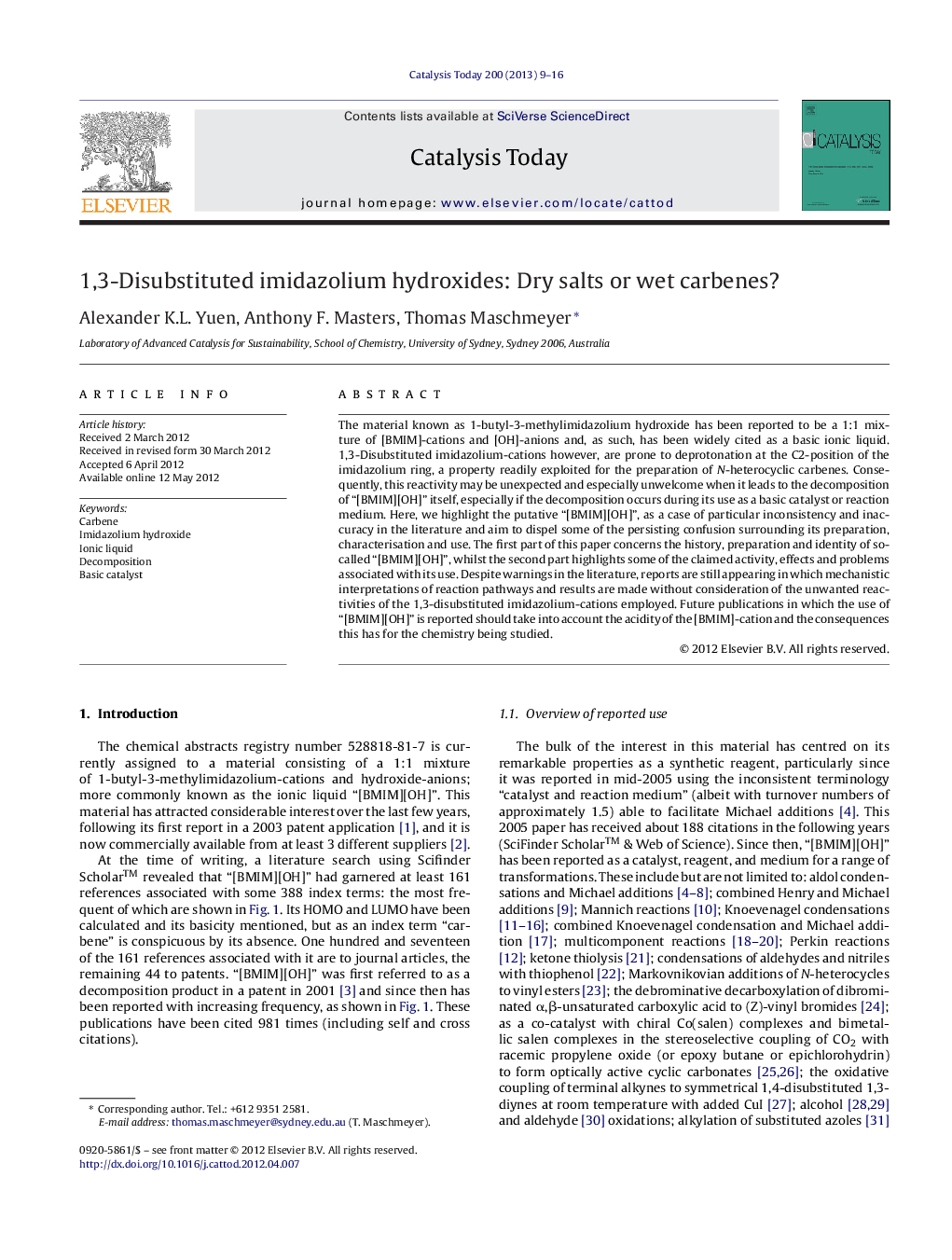| Article ID | Journal | Published Year | Pages | File Type |
|---|---|---|---|---|
| 55250 | Catalysis Today | 2013 | 8 Pages |
The material known as 1-butyl-3-methylimidazolium hydroxide has been reported to be a 1:1 mixture of [BMIM]-cations and [OH]-anions and, as such, has been widely cited as a basic ionic liquid. 1,3-Disubstituted imidazolium-cations however, are prone to deprotonation at the C2-position of the imidazolium ring, a property readily exploited for the preparation of N-heterocyclic carbenes. Consequently, this reactivity may be unexpected and especially unwelcome when it leads to the decomposition of “[BMIM][OH]” itself, especially if the decomposition occurs during its use as a basic catalyst or reaction medium. Here, we highlight the putative “[BMIM][OH]”, as a case of particular inconsistency and inaccuracy in the literature and aim to dispel some of the persisting confusion surrounding its preparation, characterisation and use. The first part of this paper concerns the history, preparation and identity of so-called “[BMIM][OH]”, whilst the second part highlights some of the claimed activity, effects and problems associated with its use. Despite warnings in the literature, reports are still appearing in which mechanistic interpretations of reaction pathways and results are made without consideration of the unwanted reactivities of the 1,3-disubstituted imidazolium-cations employed. Future publications in which the use of “[BMIM][OH]” is reported should take into account the acidity of the [BMIM]-cation and the consequences this has for the chemistry being studied.
Graphical abstractFigure optionsDownload full-size imageDownload high-quality image (242 K)Download as PowerPoint slideHighlights► The decomposition of imidazolium ionic liquids under basic conditions. ► Ionic liquids as masked N-heterocyclic carbenes. ► 1-Butyl-3-methylimidazolium hydroxide ([BMIM][OH]) is not an ionic liquid. ► Published syntheses of [BMIM][OH] contain misleading data. ► Use of impure [BMIM][OH] as a basic “catalyst” is widely reported but often claims are misleading.
